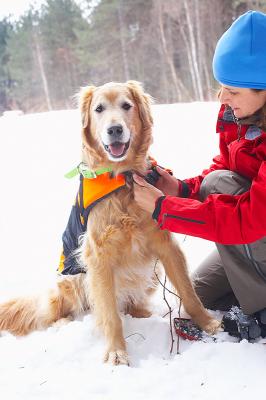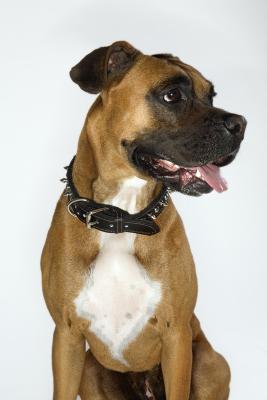Why Is My Dog Panting So Much?” – Causes and Solutions

If you’re questioning why is my dog panting so much, this guide will provide answers to the physiological and emotional reasons behind it. We’ll delve into the physiological reasons behind why dogs pant and explore how their cooling systems differ from ours.
We’ll also examine emotional triggers such as fear and stress that can lead to excessive dog’s panting. Furthermore, we will highlight some medical conditions like Cushing’s disease which could cause abnormal increases in your dog panting.
Medication side effects and certain breed characteristics may also contribute to heavy breathing in dogs – a topic we’ll dissect further. If you’re concerned about why is my dog panting so much, understanding when it’s time to consult with a veterinarian immediately becomes crucial; hence, we’ll cover that too.
In addition, we aim to help differentiate between normal canine behavior and potential problems associated with frequent heavy breathers. Finally, with prevention always being better than cure – let’s discuss best practices for maintaining hydration levels in varying climatic conditions.
Table of Contents:
- Understanding Dog Panting
- Emotional Causes of Excessive Panting
- Medical Conditions Leading to Excessive Panting
- Role of Medication and Breed Characteristics in Canine Panting
- Veterinary Examination for Unexplained Heavy Breathing in Dogs
- Differentiating Between Normal And Abnormal Canine Panting
- Preventative Measures Against Overheating Related Problems
- FAQs in Relation to Why is My Dog Panting So Much
- Conclusion
Understanding Dog Panting
Dogs pant to cool down because they don’t have sweat glands like humans. Instead, they rely on evaporating moisture from their mouth and respiratory tract to regulate their body temperature. This is especially important when it’s hot outside.
The Role of Panting in Thermoregulation for Dogs
Panting is a critical cooling mechanism for dogs. It helps lower their internal body temperature by evaporating moisture from their tongue, nasal passages, and lungs.
Differences Between Human and Canine Cooling Systems
Humans have sweat glands all over their skin, but dogs only have them in areas not covered by fur, like their paws. That’s why panting is much more effective for dogs to release excess heat. Learn more about how dogs regulate their body temperature here.
Make sure your furry friend stays comfortable during hot weather by providing plenty of fresh, cold water at all times to aid in their natural cooling process.
Emotional Causes of Excessive Panting
Is your dog panting more than usual? It might not just be the heat or exercise. Fear, anxiety, and stress can all trigger excessive panting in dogs.
Identifying fear-induced excessive panting
Dogs are experts at hiding their pain and discomfort from humans. So, it’s important to look beyond heavy breathing to identify if your pet is under any form of distress. Signs such as tail tucking or cowering can indicate fear in your furry friend.
How stress triggers heavy breathing in dogs
The connection between stress and heavy breathing in dogs isn’t always clear-cut. But understanding this link can help manage situations that may cause undue anxiety for your pet. Stressful situations like moving house or meeting new people or pets could lead to increased panting.
To alleviate these issues, consider introducing calming practices into your routine. Regular exercise and mental stimulation through toys and games can help. Additionally, creating a safe space where they feel secure during stressful events (like thunderstorms) can make a significant difference.
Consult the American Kennel Club for further information on canine panting.
Medical Conditions Leading to Excessive Panting
Dogs pant for various reasons, but when it becomes excessive, there might be an underlying medical condition causing this behavior. Diseases such as Cushing’s disease can lead to heavy breathing due to the overproduction of cortisol in the body.
Symptoms Indicative of Cushing’s Disease
- Increased thirst and urination
- Frequent panting even at rest
- Rapid weight gain or obesity
- Thinning fur or bald patches
If your dog exhibits these symptoms along with excessive dog panting, consult your vet immediately. Other conditions like bloating or laryngeal paralysis could also result in abnormal breathing patterns.
Other Medical Causes Behind Abnormal Canine Behavior
Besides Cushing’s disease and bloating, several other health issues may cause increased panting in dogs. A variety of medical issues, including cardiac conditions, pulmonary disorders and certain malignancies may be behind changes in your pup’s respiration rate. Fever or pain from injury can also make your dog breathe faster than usual.
If you notice any changes in your pet’s normal respiration rate combined with other signs of illness such as loss of appetite or lethargy, seek veterinary attention right away. Check for signs of rapid breathing.
Always keep a close eye on your dog’s behavior. Understanding their “normal” will help you spot when something is off so that you can take action quickly if needed.
Role of Medication and Breed Characteristics in Canine Panting
Dogs can pant excessively due to medication side effects or breed characteristics. Just like humans, dogs can experience side effects from medications. Some drugs might induce labored breathing in our furry friends.
It’s crucial to be aware of the potential impact of medication on canine respiration patterns and monitor any changes closely.
Impact of Medication on Canine Respiration Patterns
If your dog has started a new medication and you’ve noticed an increase in their panting, it could be related. Certain medications used for allergies or pain relief may cause increased thirst leading to more panting than usual. Always consult with your vet if you notice such changes after starting a new drug regimen.
Besides medications, breed characteristics play a significant role in how much a dog pants. Some breeds are naturally more prone to heavy breathing due to inherent traits related to the respiration process itself.
Breeds Prone Towards Heavier Breathing
Dogs with short noses (brachycephalic breeds) like Bulldogs or Pugs often have narrower airways, which can lead them to breathe heavily even during rest times compared to other breeds with longer snouts. Here is a list of some common dog breeds known for their heavier-than-average breathing habits:
- Bulldogs
- Pugs
- Boxers
- Boston Terriers
- Shih Tzus
Understanding these factors helps discern whether observed behaviors fall within the ‘normal’ range specific for each individual case scenario at hand. When unsure about anything concerning the health and wellbeing of your beloved furry friend, always seek professional opinion.
Veterinary Examination for Unexplained Heavy Breathing in Dogs
Pay attention to your furry friend’s breathing patterns, especially if they suddenly change. If your dog is panting more frequently or intensely than usual, it could be a sign of an underlying health issue. Don’t ignore this and seek prompt veterinary consultation.
Importance of Prompt Veterinary Consultation
If you notice any changes in your dog’s behavior, such as loss of appetite or lethargy, consult with a veterinarian immediately. They will conduct a thorough examination and recommend diagnostic imaging based on their initial findings.
Diagnostic Tests for Identifying Underlying Issues
The vet may employ a range of diagnostic techniques, such as blood tests, X-rays, ultrasounds or CT scans contingent on what they think could be causing the heavy panting. These tests of veterinary medicine help identify the root causes behind abnormalities, enabling appropriate treatment plans to be devised.
In some cases, abnormal canine panting can indicate serious health problems that require immediate intervention. Therefore, don’t delay seeking professional advice if you’re unsure about anything concerning your dog’s health and wellbeing.
Differentiating Between Normal And Abnormal Canine Panting
Dog pants is like humans sweating – it’s a natural cooling mechanism. Pay attention when panting becomes too much. Here’s how to differentiate between normal and abnormal panting in your furry friend.
Signs of Potential Problems
If your dog is panting heavily even at rest, has shallow breathing, or seems uncomfortable, it could be a sign of an underlying health issue. Other alarming symptoms include blue gums, coughing up blood, or collapsing episodes. In such cases, immediate veterinary attention is required.
Recognizing Abnormal Instances
Observation is key. Note any changes in your pet’s behavior, eating habits, energy levels, or physical changes like weight loss/gain. Also, keep track of when excessive panting occurs – during thunderstorms, for example – which could indicate anxiety-related issues rather than medical ones.
By being aware of any changes in your pet’s behavior, eating habits, energy levels or physical changes such as weight loss/gain and noting when excessive panting occurs due to anxiety-related issues rather than medical ones, you can provide the best possible care for your furry friend. Don’t panic over harmless natural behaviors, but always seek help when needed.
Preventative Measures Against Overheating Related Problems
As a canine guardian, it is vital to recognize that your four-legged buddy depends on you for their contentment and health. During warm weather, the potential for overheating-related issues rises dramatically, requiring extra attention from dog owners. It’s not just about running the AC or offering plenty of fresh cold water at all times, but also about creating an environment conducive to their natural cooling mechanisms to prevent labored breathing.
Hydration is Key
- Maintain Hydration: Always ensure your pet has access to clean, cool drinking water. Dehydration can increase panting as dogs try to regulate body temperature through evaporation.
- Avoid Dry Environments: During winter months, indoor heating systems can lead to dry environments, which contribute further dehydration in pets. Consider using a humidifier.
Limit Exposure to Heat
- Avoid Peak Heat Hours: Don’t take your dog out during the hottest parts of the day. Early morning or late evening walks are best.
- Invest in Cooling Products: Consider using cooling mats or vests to help regulate your dog’s body temperature.
Avoid Stressful Situations
- Avoid Crowds and Fireworks: Dogs can become stressed and pant excessively in crowded or noisy environments. Keep them away from these situations whenever possible. Avoid loud noises.
In essence, preventative measures against overheating-related problems involve understanding how our canine friends experience heat differently than us humans do and adapting our care accordingly. Remember, a happy and healthy dog is a well-hydrated dog.
FAQs in Relation to Why is My Dog Panting So Much
What is considered excessive panting in dogs?
Excessive panting in dogs is when they breathe heavily and rapidly, even when they haven’t been exercising or are in a cool environment.
How do you treat excessive panting in dogs?
If your dog’s panting is excessive, it’s important to take them to the vet to rule out any underlying health issues, but in the meantime, you can help them cool down by providing plenty of water, shade, and a cool environment. Pay attention to rapid breathing in your dog.
- For specific brands or products to help cool down your dog, check out this AKC article.
- Comparing excessive panting in dogs to cats or other pets is like comparing apples to oranges, they’re just different.
- Personal experiences or anecdotes can be helpful in understanding how other dog owners have dealt with excessive panting, but always consult with a vet for professional advice.
Remember, in pet care a happy and healthy dog is a cool and comfortable dog.
Conclusion
Excessive dog panting can be caused by a variety of factors, some harmless and others requiring immediate veterinary attention. This article addressed why is my dog panting so much and treatments available.
It’s important to differentiate between normal and abnormal panting, recognize signs of overheating, and take preventative measures against heatstroke. By staying aware of your dog’s behavior patterns and seeking professional help when necessary, you can ensure your furry friend stays healthy and happy.
For more information on dog panting and overheating, check out these credible sources:
